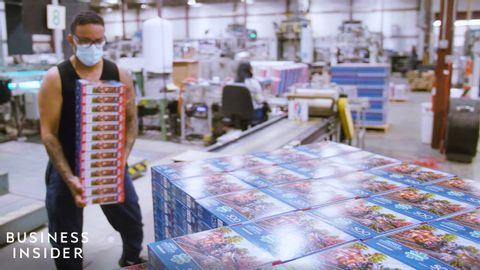
字幕與單字
美国最大的拼图工厂每月制作200万个拼图(How America's Largest Puzzle Factory Makes 2 Million Puzzles A Month)
00
joey joey 發佈於 2021 年 04 月 22 日收藏
影片單字
experience
US /ɪkˈspɪriəns/
・
UK /ɪk'spɪərɪəns/
- n. (c.)經驗;(學到東西的)經驗;經驗;經歷
- n. (c./u.)經驗;經歷;工作經驗
- v.t./i.經歷;體驗
A1 初級多益初級英檢
更多 使用能量
解鎖所有單字
解鎖發音、解釋及篩選功能
